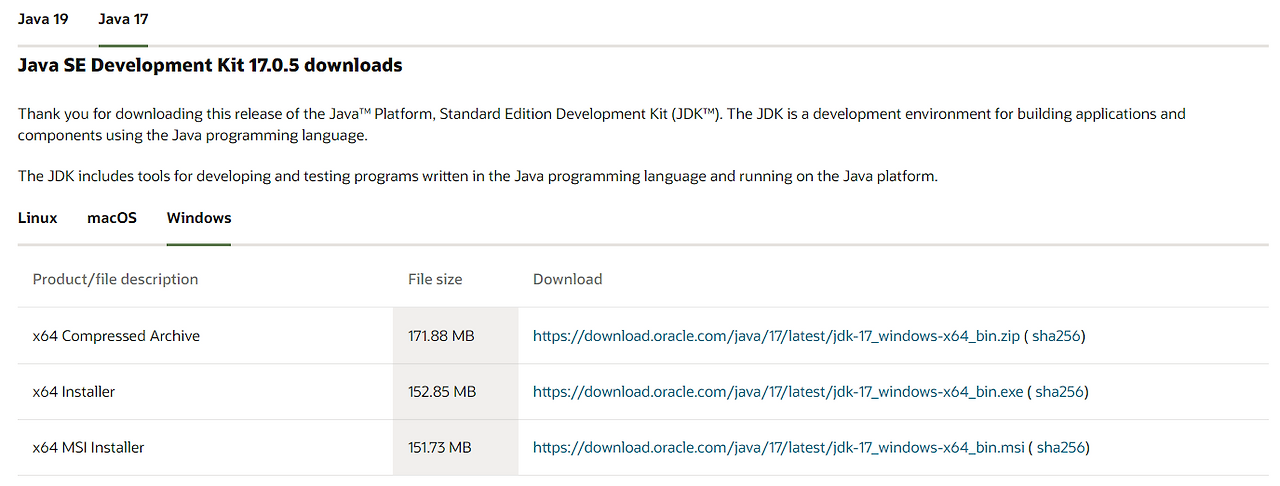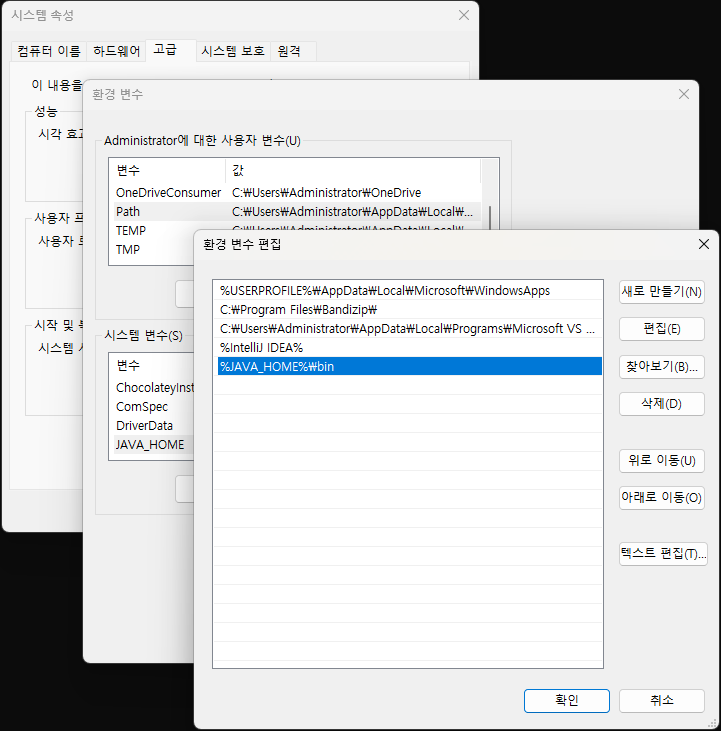원도우에 Java 17(LTS)를 설치하는 방법
Oracle JDK 다운로드
- Oracle의 공식 웹사이트에서 Java 17(LTS)를 다운로드합니다.
Oracle JDK 다운로드 페이지 : https://www.oracle.com/java/technologies/downloads/#jdk17-windows

설치 파일 실행
- 다운로드한 설치 파일을 실행하여 설치 프로세스를 시작합니다.
java 설치 경로 확인(설치 위치 찾기)
파워셀(PowerShell)
gcm -All java
명령 프롬프트
where javadir /b /s java.exe
환경 변수 등록
원도우 검색 창에서 "환경 변수" 검색
시스템 환경 변수 편집 > 고급 > 환경 변수(N)... > 시스템 변수(S) > 새로 만들기(W)...
JAVA_HOME C:\Program Files\Java\jdk-17.0.5
시스템 환경 변수 편집 > 고급 > 환경 변수(N)... > Administrator에 대한 사용자 변수(U) > 변수 : Path > 편집(E)...
%JAVA_HOME%\bin
자바 버전 확인
java --versionC:\Users\Administrator>java --version
java 17.0.5 2022-10-18 LTS
Java(TM) SE Runtime Environment (build 17.0.5+9-LTS-191)
Java HotSpot(TM) 64-Bit Server VM (build 17.0.5+9-LTS-191, mixed mode, sharing)echo %JAVA_HOME%C:\Users\Administrator>echo %JAVA_HOME%
C:\Program Files\Java\jdk-17.0.5
Windows에 Java 17(LTS)가 성공적으로 설치됩니다.
'원도우' 카테고리의 다른 글
| [draft] findstr 명령어 (0) | 2025.10.26 |
|---|---|
| [draft] Windows 10에서 WSL 2를 사용하여 Docker Desktop을 설치하는 방법 (0) | 2025.10.25 |
| [draft] TreeSize Free 유틸리티 (0) | 2025.10.17 |
| [draft] 원도우 10 제품 키 조회(시리얼 번호 조회) (0) | 2025.10.13 |
| [draft] 원도우에서 10MB 크기의 덤미 파일을 생성하는 방법 (0) | 2025.10.06 |



